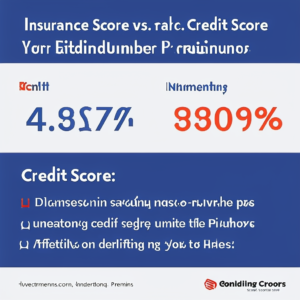Introduction
As pet ownership continues to rise, so do the costs associated with caring for our furry companions. From routine check-ups to unexpected emergencies, veterinary expenses can quickly add up, leaving pet owners to consider how best to manage these costs. Two popular strategies for financial planning in pet care are pet insurance and dedicated savings accounts. Each option has its own set of advantages and disadvantages, making it essential for pet owners to evaluate which approach best suits their needs. In this article, we will compare pet insurance and savings accounts as strategies for protecting your beloved pets, helping you make an informed decision that ensures their health and well-being.
Understanding Pet Insurance
Definition and Purpose of Pet Insurance
Pet insurance is a type of insurance policy designed to cover the costs of veterinary care for pets. The primary purpose of pet insurance is to provide financial protection to pet owners against unexpected medical expenses that can arise from accidents, illnesses, or routine care. By paying a monthly premium, pet owners can help mitigate the financial burden of veterinary bills, ensuring that their pets receive the necessary medical attention without the stress of high costs.
Types of Pet Insurance Plans
-
Accident-Only Plans:
- Definition: Accident-only plans provide coverage specifically for injuries resulting from accidents, such as fractures, bites, or other trauma.
- Coverage Details: These plans typically cover emergency care, surgeries, and hospitalization related to accidents but do not cover illnesses or routine care.
- Ideal For: Pet owners looking for a lower-cost option who want to ensure their pets are covered for unexpected accidents.
-
Comprehensive Plans (Accidents and Illnesses):
- Definition: Comprehensive plans offer coverage for both accidents and illnesses, providing a more extensive safety net for pet owners.
- Coverage Details: These plans cover a wide range of medical expenses, including diagnostic tests, surgeries, medications, and treatments for chronic conditions.
- Ideal For: Pet owners seeking comprehensive protection for their pets, especially those with a higher risk of health issues or those who want peace of mind regarding both accidents and illnesses.
-
Wellness Plans:
- Definition: Wellness plans, also known as preventive care plans, focus on routine and preventive care rather than unexpected medical expenses.
- Coverage Details: These plans typically cover vaccinations, annual check-ups, dental cleanings, and other preventive services. They may be offered as add-ons to accident and illness plans or as standalone policies.
- Ideal For: Pet owners who want to ensure their pets receive regular preventive care and maintain their overall health.
Benefits of Pet Insurance
-
Financial Protection Against High Veterinary Bills:
One of the most significant benefits of pet insurance is the financial protection it offers against high veterinary costs. Veterinary care can be expensive, especially in emergencies or for serious health conditions. Pet insurance helps cover these costs, allowing pet owners to make decisions based on their pet’s health rather than their financial situation. -
Access to a Wider Range of Treatments and Specialists:
With pet insurance, pet owners are more likely to seek out specialized treatments and advanced care options without the fear of prohibitive costs. This can include access to specialists, advanced diagnostic tests, and innovative treatments that may improve the quality of life for pets. -
Peace of Mind for Pet Owners:
Knowing that their pets are covered by insurance provides pet owners with peace of mind. They can focus on their pet’s health and well-being without the added stress of worrying about how to pay for unexpected veterinary expenses. This peace of mind can lead to better overall care for pets, as owners are more likely to seek timely medical attention when needed.
Understanding pet insurance is essential for pet owners looking to protect their furry companions. By recognizing the different types of pet insurance plans available and the benefits they offer, pet owners can make informed decisions that ensure their pets receive the necessary care while managing financial risks.
![]() The Costs of Pet Insurance
The Costs of Pet Insurance
Average Monthly Premiums and Factors Affecting Costs
-
Pet’s Age, Breed, and Health History:
- Age: Generally, younger pets tend to have lower premiums because they are less likely to have pre-existing conditions or require extensive medical care. As pets age, the risk of health issues increases, leading to higher premiums.
- Breed: Certain breeds are predisposed to specific health problems, which can affect insurance costs. For example, breeds known for hereditary conditions may have higher premiums due to the increased likelihood of claims.
- Health History: A pet’s previous health issues can impact premiums. Pets with a history of chronic illnesses or frequent veterinary visits may face higher costs, as insurers consider them higher risk.
-
Coverage Limits and Deductibles:
- Coverage Limits: Policies may have annual or lifetime coverage limits, which can affect premiums. Plans with higher coverage limits typically have higher monthly premiums, as they provide more extensive financial protection.
- Deductibles: The deductible is the amount a pet owner must pay out-of-pocket before the insurance coverage kicks in. Plans with lower deductibles usually have higher premiums, while those with higher deductibles may offer lower monthly costs. Pet owners should carefully consider their budget and how much they are willing to pay upfront when selecting a plan.
Exclusions and Waiting Periods
-
Exclusions:
Most pet insurance policies have specific exclusions that outline what is not covered. Common exclusions include:- Pre-existing Conditions: Any health issues that existed before the policy was purchased are typically not covered.
- Routine Care: Many plans do not cover routine veterinary care, such as vaccinations, spaying/neutering, and dental cleanings, unless a wellness plan is added.
- Certain Breeds: Some insurers may exclude coverage for specific breeds known for hereditary conditions or may impose limitations on coverage for those breeds.
-
Waiting Periods:
Most pet insurance policies have waiting periods, which are the time frames during which coverage is not available after the policy is purchased. Common waiting periods include:- Accident Coverage: Typically, coverage for accidents begins immediately or within a few days.
- Illness Coverage: Coverage for illnesses often has a waiting period of 14 to 30 days.
- Specific Conditions: Some policies may have longer waiting periods for certain conditions, such as orthopedic issues. Understanding these waiting periods is crucial for pet owners to ensure they are adequately covered when needed.
Potential for Premium Increases Over Time
-
Annual Increases:
Pet insurance premiums can increase annually based on several factors, including the pet’s age, changes in health status, and overall claims experience of the insurer. As pets age, the likelihood of health issues increases, which can lead to higher premiums. -
Inflation and Market Trends:
Insurers may adjust premiums to keep pace with inflation and rising veterinary costs. As the cost of veterinary care increases, insurance companies may raise premiums to maintain coverage levels. -
Claims History:
If a pet owner files multiple claims within a policy year, the insurer may consider this when determining future premiums. A history of frequent claims can lead to higher rates, as the insurer may view the pet as a higher risk.
Understanding the costs associated with pet insurance is essential for pet owners. By considering factors such as average monthly premiums, exclusions, waiting periods, and the potential for premium increases over time, pet owners can make informed decisions about their insurance options and budget accordingly for their pets’ healthcare needs.

Understanding Savings Accounts for Pet Care
Definition and Purpose of a Dedicated Savings Account
A dedicated savings account for pet care is a separate savings account specifically set up to cover the costs associated with pet ownership, including routine veterinary care, emergencies, and unexpected medical expenses. The purpose of this account is to help pet owners manage and prepare for the financial responsibilities of caring for their pets, ensuring that funds are readily available when needed without relying solely on credit or insurance.
Benefits of Using a Savings Account
-
Flexibility in How Funds Are Used:
One of the primary benefits of a dedicated savings account is the flexibility it offers. Pet owners can use the funds for a variety of expenses, including:- Routine veterinary visits, vaccinations, and preventive care.
- Emergency medical treatments or surgeries.
- Pet supplies, such as food, grooming, and training. This flexibility allows pet owners to allocate funds according to their specific needs and circumstances.
-
No Restrictions on Treatments or Providers:
Unlike pet insurance, which may have limitations on coverage, exclusions, or preferred providers, a savings account allows pet owners to choose how and where to spend their money. This means they can select their preferred veterinarian or specialist without worrying about insurance restrictions or coverage limits. -
Interest Accumulation on Savings:
Funds in a dedicated savings account can earn interest over time, helping to grow the savings. While interest rates may vary, having a savings account allows pet owners to benefit from the accumulation of interest, which can provide additional funds for future pet care expenses.
How to Set Up a Pet Care Savings Account
-
Recommended Savings Goals Based on Potential Veterinary Costs:
To effectively manage pet care expenses, pet owners should establish savings goals based on potential veterinary costs. Consider the following:- Routine Care: Estimate annual costs for routine veterinary visits, vaccinations, and preventive care. This can help set a baseline savings goal.
- Emergency Fund: Consider setting aside additional funds for emergencies. A common recommendation is to save enough to cover at least one major veterinary emergency, which can range from $1,000 to $5,000 or more, depending on the pet’s needs and health.
- Long-Term Care: If the pet is older or has known health issues, consider saving for potential long-term care costs, including medications or specialized treatments.
-
Strategies for Regular Contributions:
To build a robust pet care savings account, consider implementing the following strategies:- Automate Contributions: Set up automatic transfers from a checking account to the savings account on a regular basis (e.g., monthly or bi-weekly). This ensures consistent contributions and helps build savings over time.
- Use Windfalls: Allocate any unexpected financial windfalls, such as tax refunds, bonuses, or gifts, directly into the pet care savings account to boost savings.
- Budget for Pet Expenses: Include pet care expenses in the monthly budget and designate a specific amount to contribute to the savings account. This can help prioritize pet care in overall financial planning.
Understanding savings accounts for pet care is essential for responsible pet ownership. By defining the purpose of a dedicated savings account, recognizing the benefits it offers, and implementing strategies for setting up and contributing to the account, pet owners can ensure they are financially prepared for their pets’ healthcare needs. This proactive approach can lead to better financial management and peace of mind for pet owners.
FAQs
Q: What is pet insurance?
A: Pet insurance is a policy that helps cover veterinary expenses for your pet, including accidents, illnesses, and sometimes routine care, depending on the plan.
Q: How does a savings account for pet expenses work?
A: A savings account for pet expenses involves setting aside money regularly to cover potential veterinary costs, allowing you to pay out-of-pocket when needed without insurance.
Q: What are the benefits of pet insurance?
A: Benefits of pet insurance include financial protection against high veterinary bills, access to a wider range of treatments, and peace of mind knowing your pet is covered in emergencies.
Q: What are the advantages of using a savings account instead of pet insurance?
A: A savings account allows you to have full control over your funds, avoid monthly premiums, and save for specific expenses without the limitations of insurance coverage.
Q: Which option is more cost-effective in the long run?
A: The cost-effectiveness depends on your pet’s health, the frequency of veterinary visits, and the insurance premiums. For healthy pets, a savings account may be cheaper, while insurance can be beneficial for pets with ongoing health issues.
Q: How do I decide between pet insurance and a savings account?
A: Consider factors like your pet’s age and health, your financial situation, your ability to save consistently, and your comfort level with potential unexpected veterinary costs when making your decision.
Conclusion
In conclusion, both pet insurance and savings accounts offer viable strategies for managing the costs of pet healthcare, each with its own unique benefits and challenges. Pet insurance provides financial protection against high veterinary bills and access to a broader range of treatments, while a dedicated savings account offers flexibility and control over how funds are used. Ultimately, the right choice depends on your pet’s health, your financial situation, and your personal preferences. By carefully assessing your circumstances and considering a hybrid approach, you can ensure that you are well-prepared for any unexpected veterinary expenses. Regardless of the path you choose, being proactive in your financial planning will help safeguard your furry friend’s health and happiness for years to come.




